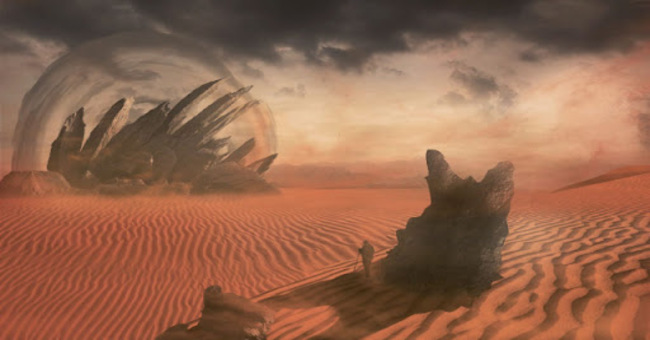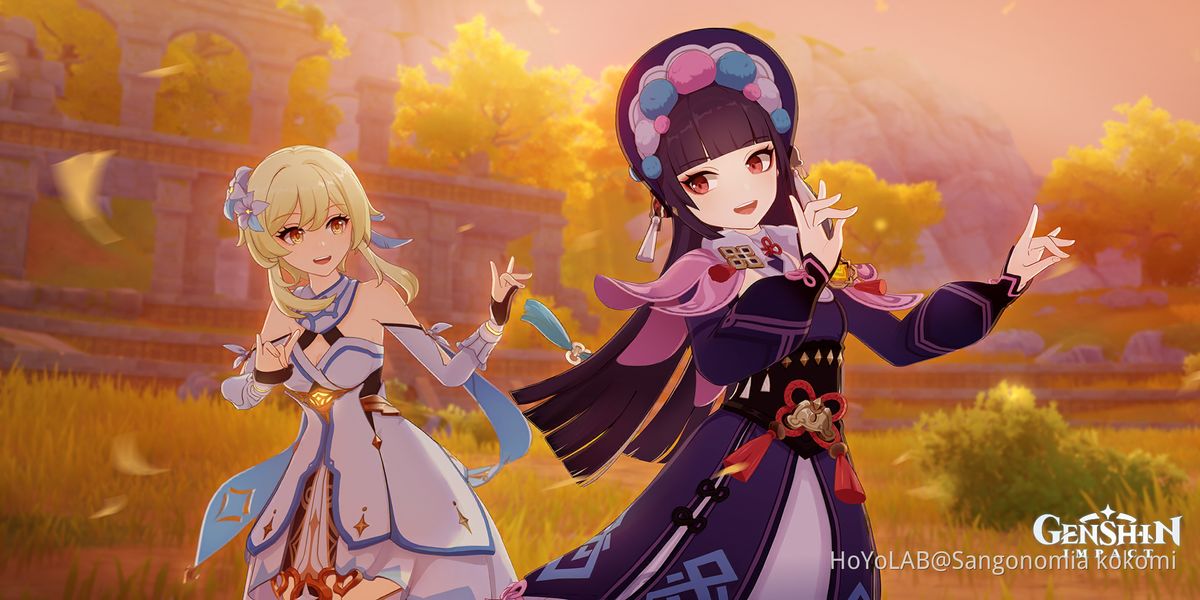Hiện vật triển lãm bị cấm xuất cảnh của Trung Quốc
Hiện vật triển lãm bị cấm xuất cảnh (tiếng Trung: 禁止出境展览文物; Hán-Việt: Cấm chỉ xuất cảnh triển lãm văn vật; bính âm: Jìnzhǐ Chūjìng Zhǎnlǎn Wénwù) là những hiện vật khảo cổ và lịch sử Trung Quốc hiện được trưng bày và lưu giữ tại các bảo tàng, viện nghiên cứu, và các địa điểm ở Trung Quốc và đồng thời cũng được Chính phủ Trung Quốc đưa vào danh sách cấm xuất cảnh vì giá trị văn hóa và lịch sử không thể thay thế. Trong số này có rất nhiều hiện vật thu thập được trong các cuộc khai quật khảo cổ lớn của Trung Quốc thế kỷ 20.
Lịch sử
[sửa | sửa mã nguồn]Trung Quốc lần đầu ban hành Luật bảo vệ di sản văn hóa vào ngày 19 tháng 11 năm 1982 trong đó điều 28 quy định việc cấm xuất cảnh đối với các di sản văn hóa được coi là có giá trị đặc biệt, trừ trường hợp chính phủ (Quốc vụ viện) Trung Quốc cho phép chính thức để triển lãm tạm thời tại nước ngoài.
Trung Quốc đã có ba lần ban hành danh sách hiện vật bị cấm xuất cảnh trong đó đợt 1 vào ngày 18 tháng 1 năm 2002 gồm 64 hiện vật, đợt hai ngày 11 tháng 6 năm 2012 gồm 37 hiện vật liên quan đến hội họa và thư họa, và đợt ba ngày 31 tháng 7 năm 2013 gồm 94 hiện vật.[1][2][3][4][5][6]
Bên cạnh các hiện vật nằm trong danh sách, các hiện vật thuộc các nhóm sau cũng bị cấm triển lãm bên ngoài Trung Quốc:[7]
- Di cốt của người cổ
- Hiện vật thờ cúng chính tại các địa điểm thờ cúng tôn giáo
- Hiện vật văn hóa hạng nhất có tính độc đáo và dễ hư hỏng, khó bảo quản
- Hiện vật không phù hợp để triển lãm ở bên ngoài Trung Quốc để đảm bảo việc duy trì, bảo tồn.
- Hiện vật chưa từng được triển lãm ở Trung Quốc.[8]
Danh sách các hiện vật bị cấm xuất cảnh
[sửa | sửa mã nguồn]Bài viết này là công việc biên dịch đang được tiến hành từ bài viết ArticleName từ một ngôn ngữ khác sang tiếng Việt. Bạn có thể giúp Wikipedia bằng cách hỗ trợ dịch và trau chuốt lối hành văn tiếng Việt theo cẩm nang của Wikipedia. |
Đợt 1 (2002)[9][10]
[sửa | sửa mã nguồn]| Tên hiện vật | Thời kỳ | Địa điểm phát hiện | Thời điểm phát hiện | Nơi lưu giữ | Minh họa |
|---|---|---|---|---|---|
| Coloured pottery pot depicting a stork, a fish, and a stone axe (彩绘鹳鱼石斧图陶缸)[11] |
Neolithic | Ruzhou, Henan | 1978 | National Museum of China, Beijing | 
|
| Pottery ding vessel in the form of an eagle, from the Yangshao culture (陶鹰鼎)[12] |
Neolithic | Hua County, Shaanxi | 1958 | National Museum of China, Beijing | 
|
| Houmuwu ding (后母戊鼎)[13] |
Shang dynasty (1600–1046 BCE) | Anyang, Henan | 1939 | National Museum of China, Beijing | 
|
| Li gui, a bronze wine cup with an inscription commemorating King Wu of Zhou's defeat of the Shang dynasty (利簋)[14] |
Western Zhou (1046–771 BCE) | Lintong, Shaanxi | 1976 | National Museum of China, Beijing | 
|
| Da Yu ding, a bronze ding cauldron cast by Yu, with an inscription dated the 23rd year of the reign of King Kang of Zhou (大盂鼎)[15] |
Western Zhou (1046–771 BCE) | Qishan, Shaanxi | 1820–1850 | National Museum of China, Beijing | 
|
| Guoji Zibai pan, a bronze trough with an inscription commemorating the defeat of Xianyun people by Duke Xuan of Guo in the 12th year of the reign of King Xuan of Zhou (虢季子白盘)[16] |
Western Zhou (1046–771 BCE) | Baoji, Shaanxi | 1820–1850 | National Museum of China, Beijing | 
|
| Four phoenix crowns from the tomb of the Wanli Emperor (凤冠)[17] |
Ming dynasty (1368–1644) | Changping District, Beijing | 1957 | National Museum of China, Beijing | 
|
| Ivory cup inlaid with turquoise, from the tomb of Fu Hao (嵌綠松石象牙杯)[18] |
Shang dynasty (1600–1046 BCE) | Anyang, Henan | 1976 | Chinese Academy of Social Sciences Institute of Archaeology | 
|
| Jin Hou Su zhong, a set of 16 ceremonial bronze bianzhong bells from the tomb of Marquis Xian of Jin (晉侯蘇鍾)[19] |
Western Zhou (1046–771 BCE) | Quwo, Shanxi | Shanghai Museum | 
| |
| Da Ke ding, a bronze ding cauldron cast by Ke during the reign of King Xiao of Zhou (大克鼎)[20] |
Western Zhou (1046–771 BCE) | Fufeng, Shaanxi | 1890 | Shanghai Museum | 
|
| Taibao ding, a bronze ding cauldron cast by the Duke of Shao during the reign of King Cheng of Zhou (太保鼎)[21] |
Western Zhou (1046–771 BCE) | Liangshan County, Shandong | mid 19th century | Tianjin Museum | 
|
| Red lacquered bowl from the Hemudu culture (河姆渡出土朱漆碗)[22] |
Neolithic | Yuyao, Zhejiang | 1977 | Zhejiang Provincial Museum, Hangzhou | 
|
| Pottery stove from the Hemudu culture (河姆渡出土陶灶)[23] |
Neolithic | Yuyao, Zhejiang | 1977 | Zhejiang Provincial Museum, Hangzhou | 
|
| Royal Jade cong from the Liangzhu culture (良渚出土玉琮王)[24] |
Neolithic | Yuhang, Zhejiang | 1986 | Zhejiang Institute of Archaeology | 
|
| Warring States crystal glass (水晶杯)[25] |
Warring States period (475–221 BCE) | Hangzhou, Zhejiang | 1990 | Zhejiang Institute of Archaeology | 
|
| Bronze stand for ceremonial vessels from the tomb of the son of King Zhuang of Chu (淅川出土銅禁)[26] |
Spring and Autumn period (771–403 BCE) | Xichuan, Henan | 1978 | Henan Museum, Zhengzhou | 
|
| Pair of square bronze jars from the tomb of the Duke of Zheng(新鄭出士蓮鶴銅方壺)[27] | Spring and Autumn period (771–403 BCE) | Xinzheng, Henan | 1923 | Palace Museum, Beijing Henan Museum, Zhengzhou |

|
| Rectangular bronze mirror from the tomb of the Prince of Qi (齐王墓青铜方镜)[28] |
Western Han (206 BCE – 9 CE) | Zibo, Shandong | 1980 | Zibo Museum | 
|
| Bronze ding vessel from the tomb of the King of Chu (铸客大铜鼎)[29] |
Warring States period (475–221 BCE) | Shou County, Anhui | 1933 | Anhui Provincial Museum, Hefei | 
|
| Lacquered wooden platform shoes from the tomb of Zhu Ran (朱然墓出土漆木屐) |
Three Kingdoms (Eastern Wu) | Ma'anshan, Anhui | 1984 | Zhu Ran Family Cemetery Museum | 
|
| Lacquered picture plate from the tomb of Zhu Ran (朱然墓出土贵族生活图漆盘)[30] |
Three Kingdoms (Eastern Wu) | Ma'anshan, Anhui | 1984 | Zhu Ran Family Cemetery Museum | 
|
| Painted lacquer wooden screen depicting scenes of filial sons and virtuous women in Chinese history, from the tomb of Sima Jinlong (司马金龙墓出土漆屏)[31] |
Northern Wei (386–534) | Datong, Shanxi | 1965 | Datong Museum | 
|
| Mural depicting horse riders from the tomb of Lou Rui (娄睿墓鞍马出行图壁画)[32] |
Northern Qi (550–577) | Taiyuan, Shanxi | 1979 | Shanxi Institute of Archaeology | 
|
| Memorial stone engraved with illustrations of Buddhist Stories (涅槃变相碑) |
Tang dynasty (618–907) | Linyi, Shanxi | Shanxi Art Museum, Taiyuan | 
| |
| Stone sculpture of a Daoist deity (常阳太尊石像) |
Tang dynasty (618–907) | Yuncheng, Shanxi | Shanxi Art Museum, Taiyuan | 
| |
| Jade ceremonial dagger-axe (大玉戈)[33] |
Shang dynasty (1600–1046 BCE) | Wuhan, Hubei | 1974 | Hubei Provincial Museum, Wuhan[33] | 
|
| Bianzhong of Marquis Yi of Zeng[34] | Warring States period (475–221 BCE) | Sui County, Hubei | 1978 | Hubei Provincial Museum, Wuhan | 
|
| Carved and lacquered wooden outer coffin from the tomb of Marquis Yi of Zeng (曾侯乙墓外棺)[35] |
Warring States period (475–221 BCE) | Sui County, Hubei | 1978 | Hubei Provincial Museum, Wuhan | 
|
| Pair of intricately decorated bronze food and wine vessels cast using the lost-wax process from the tomb of Marquis Yi of Zeng (曾侯乙青铜尊盘)[36] |
Warring States period (475–221 BCE) | Sui County, Hubei | 1978 | Hubei Provincial Museum, Wuhan | 
|
| Wooden screen with carved images of phoenixes and deer, decorated with polychromatic lacquer (彩漆木雕小座屏)[37] |
Warring States period (475–221 BCE) | Jiangling, Hubei | 1965 | Hubei Provincial Museum, Wuhan | 
|
| Clay sculpture of the head of a goddess, inlaid with jade eyes, from the Hongshan culture temple at Niuheliang (红山文化女神像)[38] |
Neolithic | Lingyuan, Liaoning | 1983 | Liaoning Institute of Archaeology | |
| Duck-shaped glass object (鸭形玻璃注)[39] |
Northern Yan (407–436) | Beipiao, Liaoning | 1965 | Liaoning Province Museum, Shenyang | 
|
| 4 metre tall bronze tree with a dragon curling up the trunk, and leaves, fruit and birds on the branches (青铜神树)[40] |
Shang dynasty (1600–1046 BCE) | Guanghan, Sichuan | 1986 | Sanxingdui Museum | 
|
| Ceremonial jade object with engraved drawings of stylized human figures (三星堆出土玉边璋)[41] |
Shang dynasty (1600–1046 BCE) | Guanghan, Sichuan | 1986 | Sanxingdui Museum | 
|
| 2 metre tall bronze tree with coins on its branches and a phoenix perched at the top (摇钱树)[42] |
Eastern Han (25–220) | Mianyang, Sichuan | 1990 | Mianyang Museum | 
|
| Gansu Flying Horse (铜奔马)[43] |
Eastern Han (25–220) | Wuwei, Gansu | 1969 | Gansu Provincial Museum, Lanzhou | 
|
| The Qin bronze chariots, from the Mausoleum of the First Qin Emperor (铜车马)[44] |
Qin dynasty (221–206 BCE) | Lintong, Shaanxi | 1980 | Museum of the Terracotta Warriors and Horses of Qin Shihuang, Lintong | 
|
| Shi Qiang pan[45] | Western Zhou (1046–771 BCE) | Fufeng, Shaanxi | 1967 | Baoji Bronzeware Museum | 
|
| Large bronze ding vessel with three handles and ox-head decoration (淳化大鼎)[46] |
Western Zhou (1046–771 BCE) | Chunhua, Shaanxi | 1979 | Chunhua Museum | |
| Bronze He zun, with an inscription recording the construction of the capital at Luoyang by King Cheng of Zhou[47] | Western Zhou (1046–771 BCE) | Baoji, Shaanxi | 1963 | Baoji Bronzeware Museum | 
|
| Stone sculptures from the tomb of Huo Qubing at the mausoleum of Emperor Wu of Han at Maoling (茂陵石雕)[48] |
Western Han (206 BCE – 9 CE) | Xianyang, Shaanxi | Maoling Museum, Xianyang | 
| |
| Xi'an Stele — a stele recording the introduction of Christianity into China in 635 (大秦景教流行中国碑)[49] |
Tang dynasty (618–907) | Shaanxi | 1623 | Xi'an Beilin Museum, Xi'an | 
|
| Gilt silver jug imitating the shape of a leather water bottle, with a design of prancing horses Hejia Village hoard (舞马衔杯仿皮囊式银壶)[50] |
Tang dynasty (618–907) | Xi'an, Shaanxi | 1970 | Shaanxi History Museum, Xi'an | 
|
| Zoomorphic drinking horn made from agate Hejia Village hoard (兽首玛瑙杯)[51] |
Tang dynasty (618–907) | Xi'an, Shaanxi | 1970 | Shaanxi History Museum, Xi'an | 
|
| Bronze bell cast in 711, weighing 6,500 kg, originally from the bell tower at the Tang capital Chang'an (景云铜钟)[52] |
Tang dynasty (618–907) | Xi'an Beilin Museum, Xi'an | 
| ||
| Gilt and silvered monk's staff donated to Famen Temple by Emperor Yizong of Tang in 873 (银花双轮十二环锡杖)[53] |
Tang dynasty (618–907) | Fufeng, Shaanxi | 1987 | Famen Temple Museum, Fufeng | 
|
| Set of eight nested relic boxes containing a relic supposed to be a finger bone from Śākyamuni Buddha, from Famen Temple (八重宝函)[54] |
Tang dynasty (618–907) | Fufeng, Shaanxi | 1987 | Famen Temple Museum, Fufeng | 
|
| Bronze model pagoda from Famen Temple (铜浮屠)[55] |
Tang dynasty (618–907) | Fufeng, Shaanxi | 1987 | Famen Temple Museum, Fufeng | |
| "Five stars rising in the East" armband ("五星出东方"护膊)[56] |
Eastern Han (25–220) to Jin (266–420) | Minfeng, Xinjiang | 1995 | Xinjiang Institute of Archaeology | 
|
| Bronze table frame inlaid with gold and silver, decorated with figures of four dragons and four phoenixes (错金银四龙四凤铜方案座)[57] |
Warring States period (475–221 BCE) | Pingshan, Hebei | 1974 | Hebei Museum, Shijiazhuang[57] | 
|
| Bronze ding vessel with iron feet from the tomb of the King of Zhongshan (中山王铁足铜鼎)[58] |
Warring States period (475–221 BCE) | Pingshan, Hebei | 1977 | Hebei Museum, Shijiazhuang[58] | 
|
| Jade burial suit from the tomb of Liu Sheng, Prince of Zhongshan (刘胜金缕玉衣)[59] |
Western Han (206 BCE – 9 CE) | Mancheng, Hebei | 1968 | Hebei Museum, Shijiazhuang | 
|
| Gilt bronze lamp in the shape of a serving girl, from the tomb of Lady Dou Wan (长信宫灯)[60] |
Western Han (206 BCE – 9 CE) | Mancheng, Hebei | 1968 | Hebei Museum, Shijiazhuang | 
|
| Five bronze pieces from an otherwise decayed folding screen, from the tomb of the King of Nanyue (铜屏风构件5件)[61] |
Western Han (206 BCE – 9 CE) | Guangzhou, Guangdong | 1983 | Museum of the Mausoleum of the Nanyue King, Guangzhou | 
|
| Horn-shaped jade cup from the tomb of the King of Nanyue (角形玉杯)[62] |
Western Han (206 BCE – 9 CE) | Guangzhou, Guangdong | 1983 | Museum of the Mausoleum of the Nanyue King, Guangzhou | 
|
| Silk painting depicting a man riding a dragon (人物御龙帛画)[63] |
Warring States period (475–221 BCE) | Changsha, Hunan | 1949 | Hunan Provincial Museum, Changsha | 
|
| Silk painting depicting a man with a dragon and a phoenix (人物龙凤帛画)[64] |
Warring States period (475–221 BCE) | Changsha, Hunan | 1949 | Hunan Provincial Museum, Changsha | 
|
| Plain gauze robe from the tomb of the Marquis of Dai at Mawangdui (直裾素纱禅衣)[65] |
Western Han (206 BCE – 9 CE) | Changsha, Hunan | 1972 | Hunan Provincial Museum, Changsha | 
|
| Wooden outer coffin from the tomb of the Marquis of Dai at Mawangdui (马王堆一号墓木棺椁) |
Western Han (206 BCE – 9 CE) | Changsha, Hunan | 1972 | Hunan Provincial Museum, Changsha | 
|
| T-shaped silk funeral banner from the tomb of the Marquis of Dai at Mawangdui (马王堆一号墓T型帛画)[66] |
Western Han (206 BCE – 9 CE) | Changsha, Hunan | 1972 | Hunan Provincial Museum, Changsha | 
|
| Brocade banner depicting the Sun God and hunting scenes (红地云珠日天锦)[67] |
Northern dynasties (386–581) | Dulan, Qinghai | 1983 | Qinghai Institute of Archaeology | |
| Nine volumes of Buddhist texts written in the Tangut language that were printed using wooden movable type, from Baisigou Square Pagoda (西夏文佛经《吉祥遍至口和本续》纸本)[68] |
Western Xia (1038–1227) | Helan, Ningxia | 1991 | Ningxia Institute of Archaeology | 
|
| Red-glazed pottery model of a granary (青花釉里红瓷仓)[69] |
Yuan dynasty (1271–1368) | Jingdezhen, Jiangxi | 1974 | Jiangxi Provincial Museum, Nanchang | |
| Picture of the Seven Sages of the Bamboo Grove composed from more than 300 moulded bricks (竹林七贤砖印模画)[70] |
Southern dynasties (420–589) | Nanjing, Jiangsu | 1960 | Nanjing Museum | 
|
Đợt 2 (2012)
[sửa | sửa mã nguồn]| Tên hiện vật | Thời kỳ | Nơi lưu giữ | Minh họa |
|---|---|---|---|
| Bản thảo Bình phục thiếp (平复帖) của Lục Cơ | Tây Tấn | Bảo tàng Cố cung | 
|
| Bản thảo Bá viễn thiếp (伯遠帖) của Vương Tuấn | Đông Tấn | 
| |
| Bản thảo Lan đình tự (兰亭序) do Phùng Thừa Tố phỏng lại thư pháp của Vương Hi Chi | Nhà Đường | 
| |
| Bản thảo Mộng điệp thiếp (梦奠帖) của Âu Dương Tuân | Bảo tàng Liêu Ninh | ||
| Bản thảo 'Thiện kiến luật (善见律) của Quốc Thuyên | Bảo tàng Cố cung | ||
| Bản thảo Khổ duẩn thiếp (苦筍帖) của Hoài Tố | Bảo tàng Thượng Hải | 
| |
| Bản thảo Trương hảo hảo thi (张好好诗) của Đỗ Mục | Nhà Đường | Bảo tàng Cố cung | |
| Bản thảo chép lại thư pháp của Vương Hi Chi thời Đường (Mô Vương Hi Chi nhất môn thư hàn, 摹王羲之一门书翰) | Bảo tàng Liêu Ninh | ||
| 杨凝式《神仙起居法帖》卷 | 五代 | 故宫博物院 | |
| 林逋《自书诗》卷 | 北宋 | ||
| 蔡襄《自书诗》卷 | |||
| 文彦博《三帖卷》 | |||
| 韩琦《行楷信札卷》卷 | 贵州省博物馆 | ||
| 王安石《楞严经旨要》卷 | 上海博物馆 | ||
| 黄庭坚《诸上座》卷 | 故宫博物院 | ||
| 米芾《苕溪诗》卷 | |||
| 赵佶《草书千字文》卷 | 北宋 | 辽宁省博物馆 | 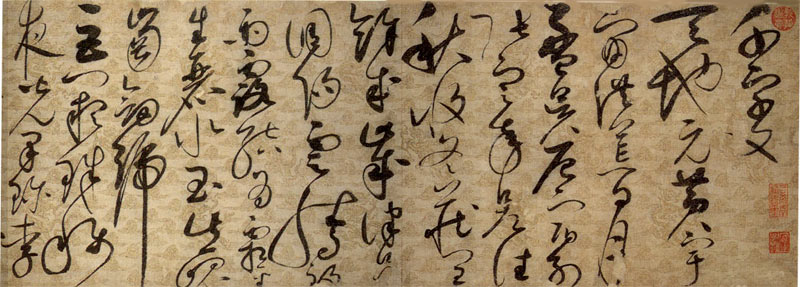
|
| 展子虔《游春图》卷 | 隋朝 | 故宫博物院 | 
|
| 韩滉《五牛图》卷 | 唐朝 | ||
| 周昉《挥扇仕女图》卷 | 
| ||
| 孙位《高逸图》卷 | 上海博物馆 | ||
| 王齐翰《勘书图》卷 | 五代 | 南京大学 | |
| 周文矩《重屏会棋图》卷 | 故宫博物院 | 
| |
| 胡瓌《卓歇图》卷 | |||
| 顾闳中《韩熙载夜宴图》卷 | 
| ||
| 卫贤《高士图》卷 | |||
| 董源《山口待渡图》卷 | 辽宁省博物馆 | ||
| 黄筌《写生珍禽图》卷 | 故宫博物院 | 
| |
| 王诜《渔村小雪图》卷 | 北宋 | 
| |
| 梁师闵《芦汀密雪图》卷 | |||
| 李公麟《摹韦偃牧放图》卷 | |||
| 祁序《江山牧放图》卷 | |||
| 张择端《清明上河图》卷 | 
| ||
| 王希孟《千里江山图》卷 | 
| ||
| 马和之《后赤壁赋图》卷 | 南宋 | ||
| 赵伯骕《万松金阙图》卷 | |||
| 宋人摹阎立本《步辇图》卷 | 宋代 | 
|
Đợt 3 (2013)
[sửa | sửa mã nguồn]Xem thêm
[sửa | sửa mã nguồn]Tham khảo
[sửa | sửa mã nguồn]- ^ “国家文物局关于印发《首批禁止出国(境)展览文物目录》的通知”. 文物工作 (1): 19-20. 2002.
- ^ “国家文物局发出通知,首批一级文物禁止出国(境)展览”. 中國歷史文化遺產保護網. Bản gốc lưu trữ ngày 4 tháng 8 năm 2009. Truy cập ngày 27 tháng 4 năm 2009. Đã bỏ qua tham số không rõ
|dead-url=(gợi ý|url-status=) (trợ giúp) - ^ “关于发布《第二批禁止出国(境)展览文物目录(书画类)》的通知(文物博函〔2012〕1345号)”. 国家文物局. 11 tháng 6 năm 2012. Bản gốc lưu trữ ngày 19 tháng 11 năm 2023. Truy cập ngày 19 tháng 11 năm 2023. Đã bỏ qua tham số không rõ
|dead-url=(gợi ý|url-status=) (trợ giúp) - ^ “关于发布《第二批禁止出国(境)展览文物目录(书画类)》的通知(文物博函〔2012〕1345号)”. 国家文物局. 11 tháng 6 năm 2012. Bản gốc lưu trữ ngày 19 tháng 11 năm 2023. Truy cập ngày 19 tháng 11 năm 2023. Đã bỏ qua tham số không rõ
|dead-url=(gợi ý|url-status=) (trợ giúp) - ^ “关于发布《第三批禁止出境展览文物目录》的通知(文物博函〔2013〕1320号)”. 中国文艺网. 31 tháng 7 năm 2013. Bản gốc lưu trữ ngày 16 tháng 8 năm 2022. Truy cập ngày 19 tháng 11 năm 2023. Đã bỏ qua tham số không rõ
|dead-url=(gợi ý|url-status=) (trợ giúp) - ^ “关于发布《第三批禁止出境展览文物目录》的通知”. 国家文物局. 31 tháng 7 năm 2013. Bản gốc lưu trữ ngày 13 tháng 9 năm 2021. Truy cập ngày 19 tháng 11 năm 2023. Đã bỏ qua tham số không rõ
|dead-url=(gợi ý|url-status=) (trợ giúp) - ^ 文物出境展览管理规定, State Administration of Cultural Heritage, 28 tháng 10 năm 2007, Bản gốc lưu trữ ngày 19 tháng 3 năm 2012, truy cập ngày 16 tháng 9 năm 2011
- ^ Lỗi chú thích: Thẻ
<ref>sai; không có nội dung trong thẻ ref có tênsach-2007-10-29 - ^ 国家文物局发出通知 首批一级文物禁止出国(境)展览, The Chinese Cultural Heritage Protection Web Site
- ^ 国家文物局发出通知 首批一级文物禁止出国(境)展览, Beijing Global Culture Information Technology, Bản gốc lưu trữ ngày 23 tháng 9 năm 2015, truy cập ngày 16 tháng 9 năm 2011
- ^ “彩绘鹳鱼石斧图陶缸”. The Chinese Cultural Heritage Protection Web Site.
- ^ “陶鹰鼎”. The Chinese Cultural Heritage Protection Web Site.
- ^ “司母戊铜鼎”. The Chinese Cultural Heritage Protection Web Site.
- ^ “利簋”. The Chinese Cultural Heritage Protection Web Site.
- ^ “大盂鼎”. The Chinese Cultural Heritage Protection Web Site.
- ^ “虢季子白盘”. The Chinese Cultural Heritage Protection Web Site.
- ^ “凤冠”. The Chinese Cultural Heritage Protection Web Site.
- ^ “嵌绿松石象牙杯”. The Chinese Cultural Heritage Protection Web Site.
- ^ “晋侯苏钟”. The Chinese Cultural Heritage Protection Web Site.
- ^ “大克鼎”. The Chinese Cultural Heritage Protection Web Site.
- ^ “太保鼎”. The Chinese Cultural Heritage Protection Web Site.
- ^ “河姆渡出土朱漆碗”. The Chinese Cultural Heritage Protection Web Site.
- ^ “河姆渡土"陶灶"”. The Chinese Cultural Heritage Protection Web Site.
- ^ “良渚出土玉琮王”. The Chinese Cultural Heritage Protection Web Site.
- ^ “水晶杯”. The Chinese Cultural Heritage Protection Web Site.
- ^ “淅川出土云纹铜禁”. The Chinese Cultural Heritage Protection Web Site.
- ^ “新郑出土莲鹤铜方壶”. The Chinese Cultural Heritage Protection Web Site.
- ^ “齐王墓青铜方镜”. The Chinese Cultural Heritage Protection Web Site.
- ^ “铸客大铜鼎”. The Chinese Cultural Heritage Protection Web Site.
- ^ “朱然墓出土贵族生活图漆盘”. The Chinese Cultural Heritage Protection Web Site.
- ^ “司马金龙墓出土漆屏”. The Chinese Cultural Heritage Protection Web Site.
- ^ “娄睿墓鞍马出行图壁画”. The Chinese Cultural Heritage Protection Web Site.
- ^ a b “Treasures in Hubei Provincial Museum”. General Office of Hubei Provincial People’s Government.
- ^ “曾侯乙编钟”. The Chinese Cultural Heritage Protection Web Site.
- ^ “曾侯乙墓外棺”. The Chinese Cultural Heritage Protection Web Site.
- ^ “曾侯乙青铜尊盘”. The Chinese Cultural Heritage Protection Web Site.
- ^ “彩漆木雕小座屏”. The Chinese Cultural Heritage Protection Web Site.
- ^ “红山文化女神像”. The Chinese Cultural Heritage Protection Web Site.
- ^ “鸭形玻璃注”. The Chinese Cultural Heritage Protection Web Site.
- ^ “青铜神树”. The Chinese Cultural Heritage Protection Web Site.
- ^ “三星堆出土玉边璋”. The Chinese Cultural Heritage Protection Web Site.
- ^ “摇钱树”. The Chinese Cultural Heritage Protection Web Site.
- ^ “铜奔马”. The Chinese Cultural Heritage Protection Web Site.
- ^ “铜车马”. The Chinese Cultural Heritage Protection Web Site.
- ^ “墙盘”. The Chinese Cultural Heritage Protection Web Site.
- ^ “淳化大鼎”. The Chinese Cultural Heritage Protection Web Site.
- ^ “何尊”. The Chinese Cultural Heritage Protection Web Site.
- ^ “茂陵石雕”. The Chinese Cultural Heritage Protection Web Site.
- ^ “大秦景教流行中国碑”. The Chinese Cultural Heritage Protection Web Site.
- ^ “舞马衔杯仿皮囊式银壶”. The Chinese Cultural Heritage Protection Web Site.
- ^ “兽首玛瑙杯”. The Chinese Cultural Heritage Protection Web Site.
- ^ “景云铜钟”. The Chinese Cultural Heritage Protection Web Site.
- ^ “银花双轮十二环锡杖”. The Chinese Cultural Heritage Protection Web Site.
- ^ “八重宝函”. The Chinese Cultural Heritage Protection Web Site.
- ^ “铜浮屠”. The Chinese Cultural Heritage Protection Web Site.
- ^ “"五星出东方"护膊”. The Chinese Cultural Heritage Protection Web Site.
- ^ a b “错金银四龙四凤铜方案座”. Hebei Museum.
- ^ a b “中山王铁足大铜鼎”. Hebei Museum.
- ^ “刘胜金缕玉衣”. The Chinese Cultural Heritage Protection Web Site.
- ^ “长信宫灯”. The Chinese Cultural Heritage Protection Web Site.
- ^ “铜屏风构件5件”. The Chinese Cultural Heritage Protection Web Site.
- ^ “角形玉杯”. The Chinese Cultural Heritage Protection Web Site.
- ^ “人物御龙帛画”. The Chinese Cultural Heritage Protection Web Site.
- ^ “人物龙凤帛画”. The Chinese Cultural Heritage Protection Web Site.
- ^ “直裾素纱禅衣”. The Chinese Cultural Heritage Protection Web Site.
- ^ “马王堆一号墓T型帛画”. The Chinese Cultural Heritage Protection Web Site.
- ^ “红地云珠日天锦”. The Chinese Cultural Heritage Protection Web Site.
- ^ “西夏文佛经《吉祥遍至口本续》纸本”. The Chinese Cultural Heritage Protection Web Site.
- ^ “青花釉里红瓷仓”. The Chinese Cultural Heritage Protection Web Site.
- ^ “竹林七贤砖印模画”. The Chinese Cultural Heritage Protection Web Site.
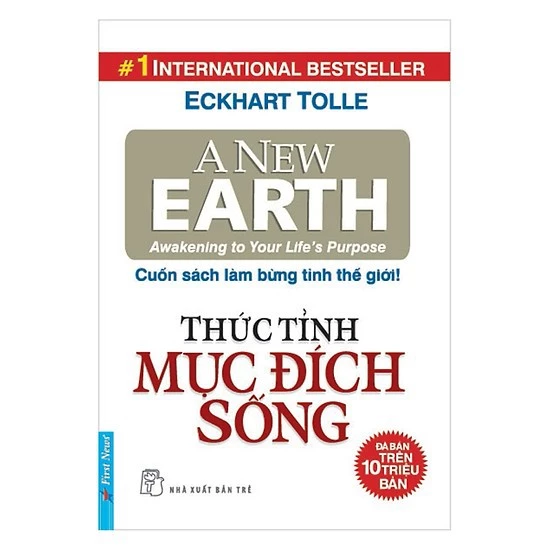 GIẢM
19%
GIẢM
19%
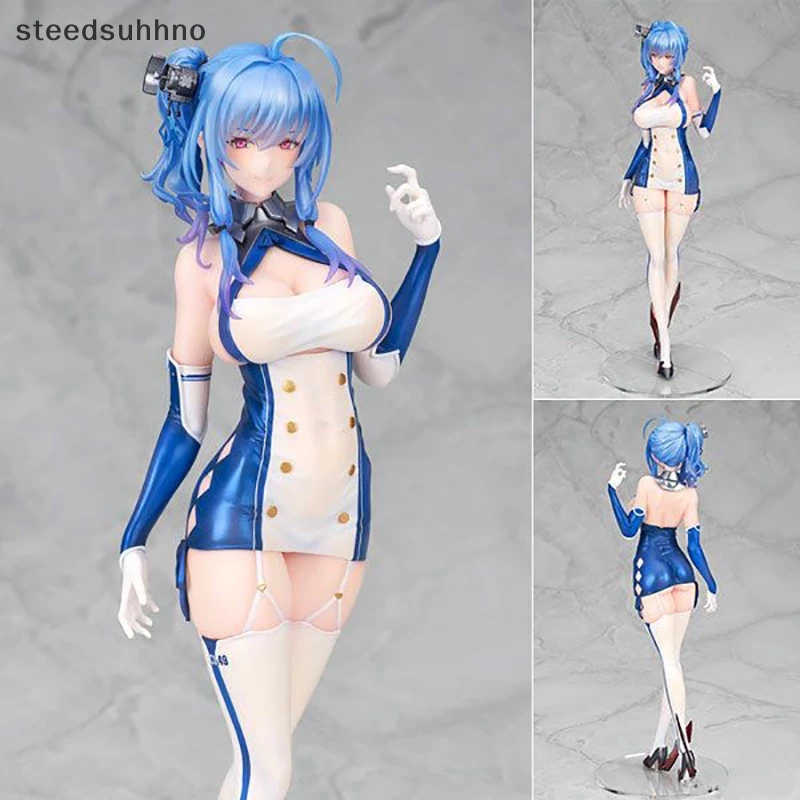 GIẢM
20%
GIẢM
20%
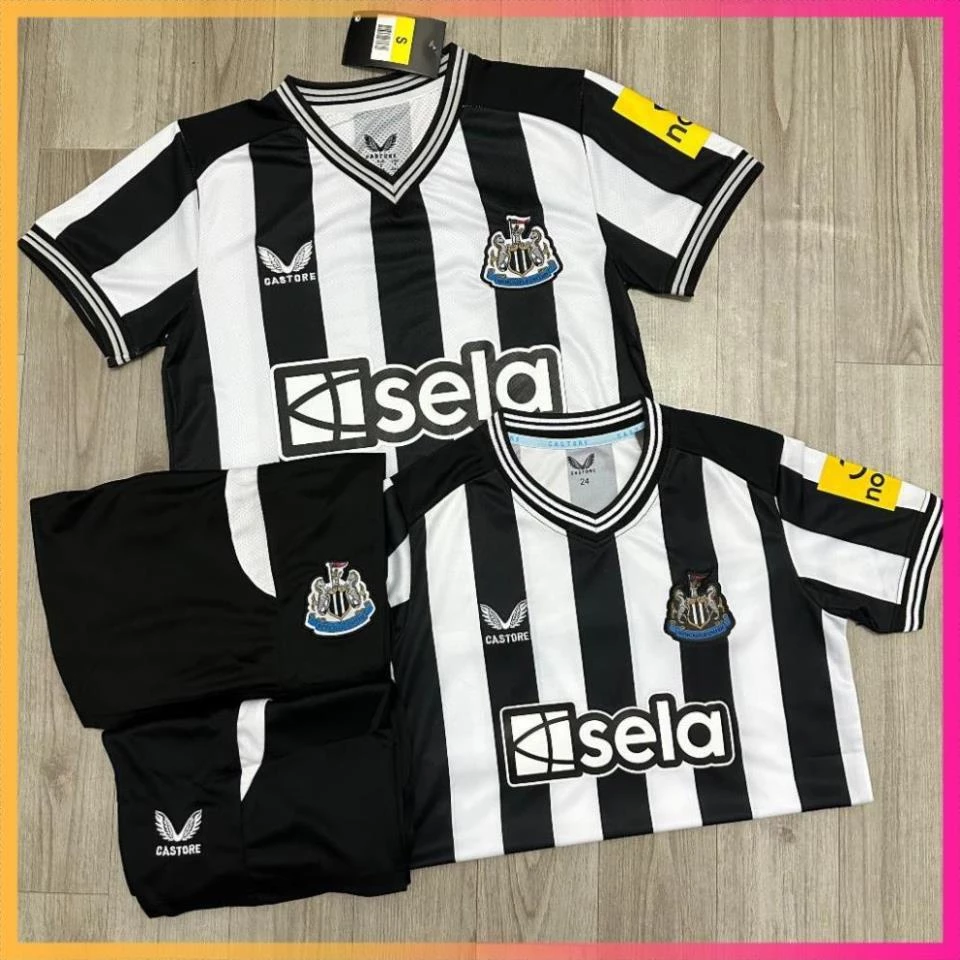 GIẢM
18%
GIẢM
18%
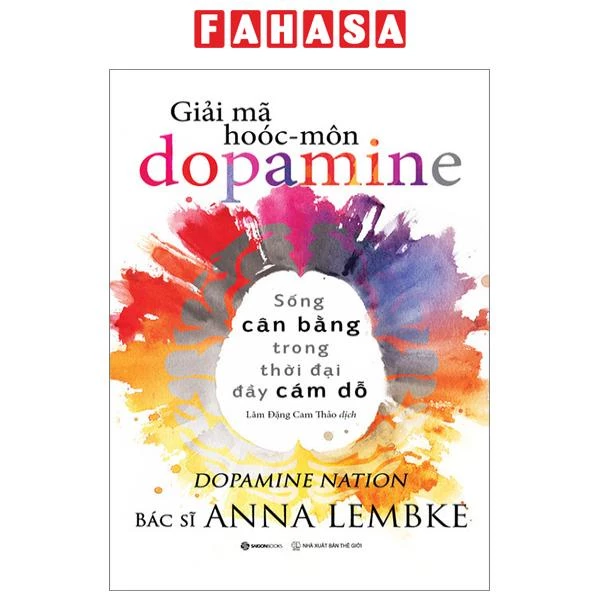 GIẢM
25%
GIẢM
25%
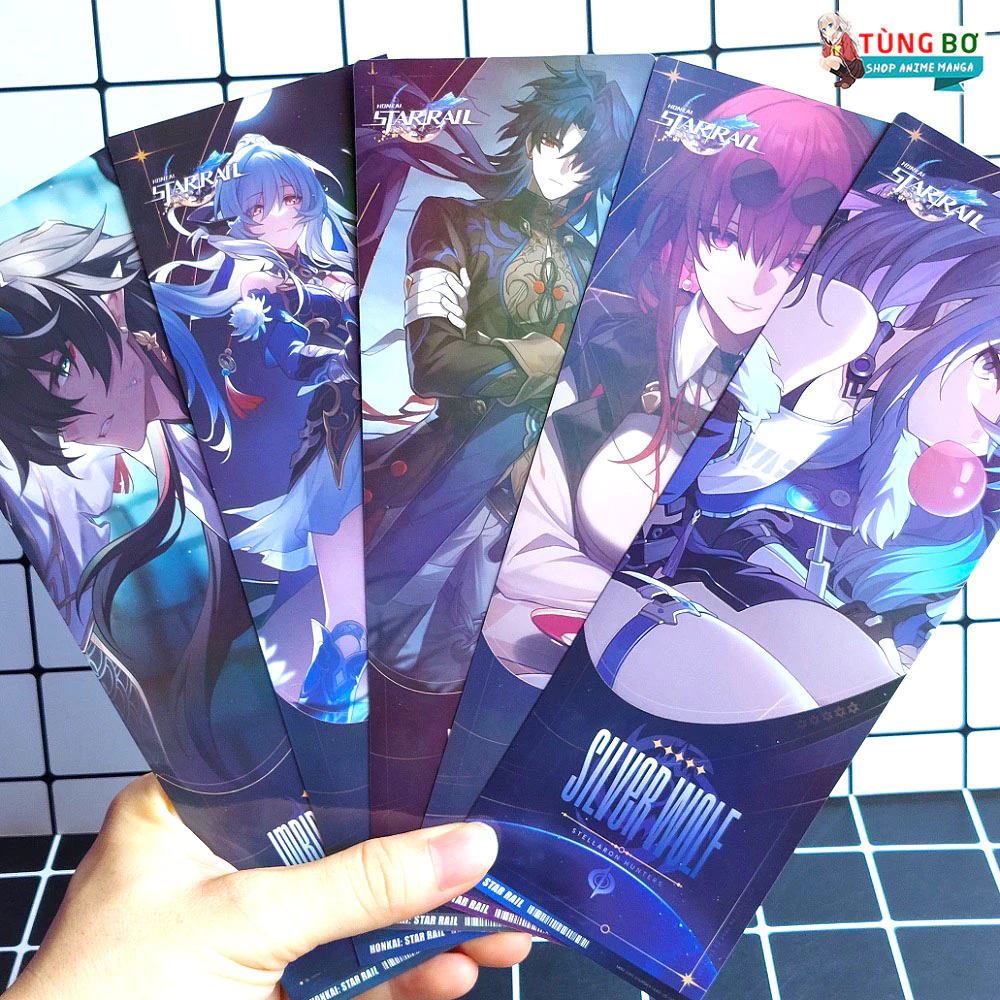 GIẢM
41%
GIẢM
41%
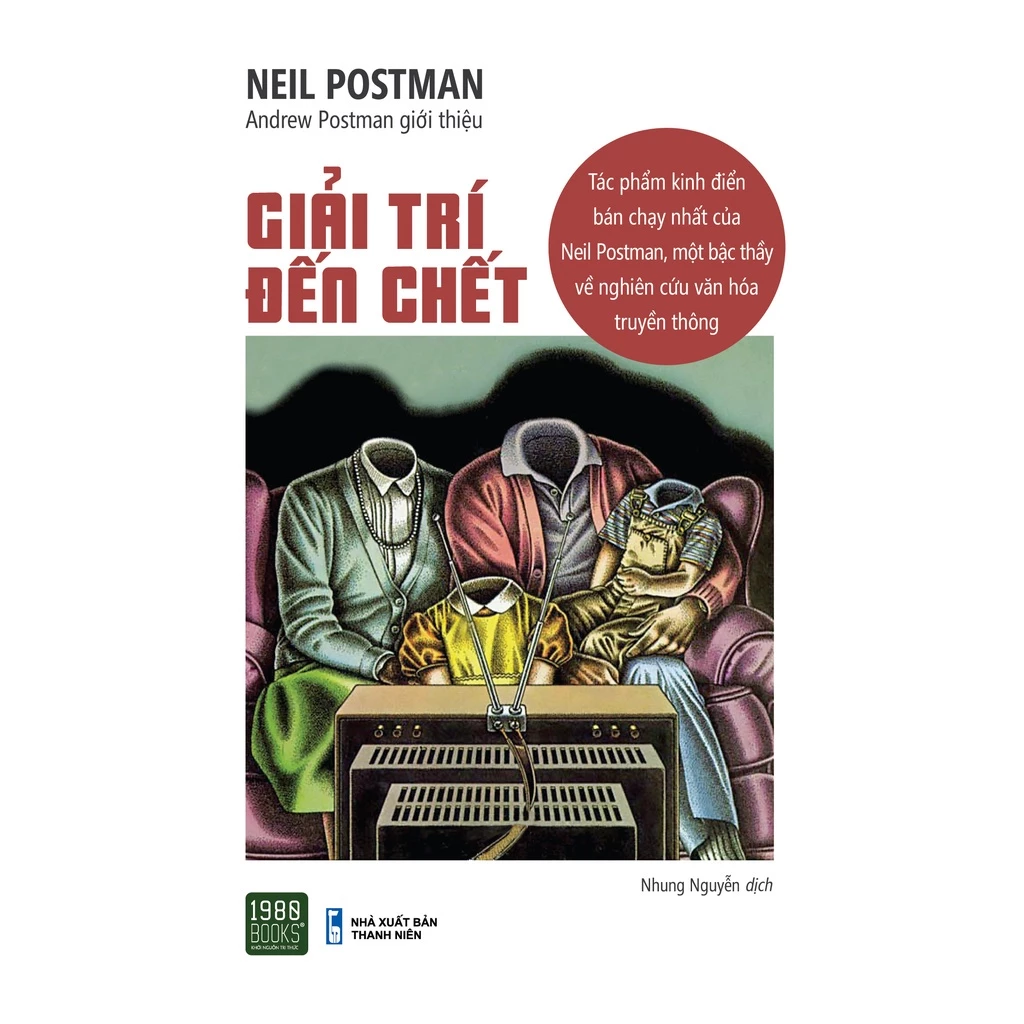 GIẢM
31%
GIẢM
31%
